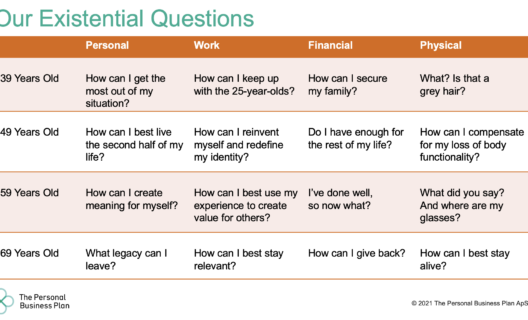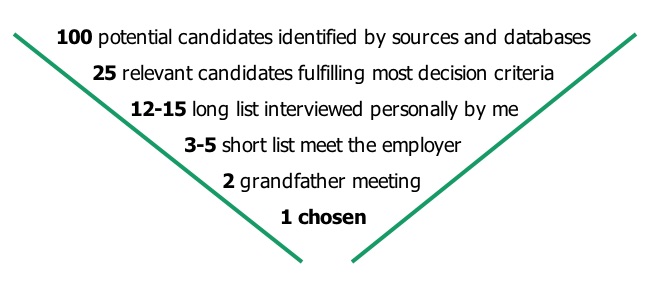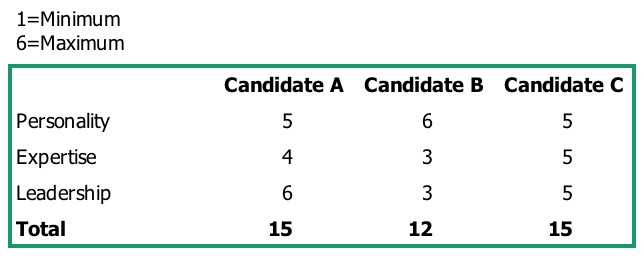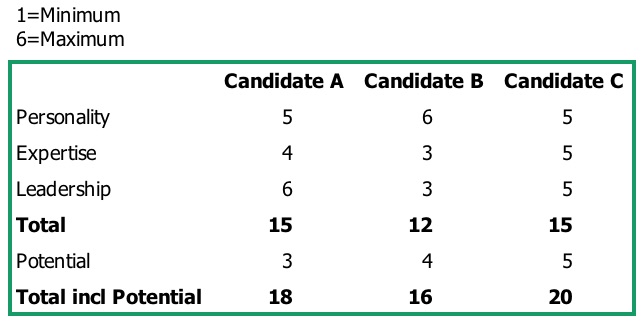
🍀PBP News #6 | Create your Personal Business Plan as an eBook
Dear friend, It’s been a while since you heard from us… Now we’re picking up on our newsletter again. Today’s newsletter is about big things and small: Your own Pe...

Also, of course, about the tips and the tricks of the trade. This is exactly what this article is about.
For 20 years I was a partner in global executive search firms such as Korn Ferry. Over those many years, I built a systematic approach to evaluating candidates. I will share this approach with you at the end of the article.
But first, I will share with you some of the myths, I’ve encountered in my professional life.
No, you haven’t! You’ve been contacted by a researcher together with probably 100 other potential candidates. The funnel goes like this:

To become The Chosen One, you need to go through the following process. First, you need to be noticed. Then your competencies need to match the profile. Now you start having a realistic chance of getting the job. The long list consists of 12-15 candidates who have been psychometrically assessed and thereafter invited for a personal interview with me. For each one, a preliminary candidate report is compiled based on the candidate’s CV, the psychometric tests, and other available sources like social media and digital footprint. I use the interview to fill in the blanks and form my personal impression of the candidate. The best interviews are relaxed conversations where other topics than the job are also discussed. As a candidate, you need to show your entire personality, not only your professional identity. Typically, my first question is: “How would you characterize yourself as a human being?”
Now, having gone through the assessment and the personal interview, you have a statistical chance of being chosen. Typically, 3-5 candidates are presented to and meet with the employer (my client) together with me. And 2 are presented for the second interview with the boss’ boss, the grandfather meeting. And then, one is offered the job.
No, it wasn’t! If you feel you didn’t stand a real chance it was because you didn’t succeed in conveying the optimal picture of your competencies – or you simply did not fit the bill. It was not because you were too old, had the wrong gender, or was over-qualified. All challenges can be turned into advantages. I specifically remember a 58-year old candidate, who had been fired from his former job. Instead of acting as a victim, he entered the interview room saying that he fully understood that his department had to be outsourced. And he stood on his forefeet, exuding energy, talking about how he trained young people in martial arts. Within a few minutes, he turned a very challenging situation into an exciting story. Since he matched the success criteria for the job, he got it!
Not necessarily so! Headhunters do have attractive positions available, but the best job is not necessarily available at one specific headhunter when you need it. Think about it. There are so many possible combinations of seniority level, functional area, geography, industry and key competencies that the probability that one of these fit your background exactly during a specific 6-month period is indeed very, very small. So, I would rather say that the best job comes when two people sit together and talk about potential candidates for a specific position and your name comes up. In that case, you have already been pre-selected, and you have some internal sponsors. This is what all the networking is about. Building relationships before you really need them. A Chinese proverb says: “The best time to plant a tree is 20 years ago!”.
Not so! The headhunter sees so many candidates that you as an individual will not necessarily leave a deep impression. If, for example, you are out of a job, your key to success is a professional presentation of your competencies and a specific target position. In top executive search, the database searches are so comprehensive and precise that your documented results and career count more than your personal stories. It is your results which pave the way to your success.
No, it’s all about selling! First, as a headhunter, I must sell myself to the employer (my client). Second, the headhunter must sell the job to the candidate. Third, you as a candidate must sell yourself to the headhunter. Fourth, the headhunter must sell the candidate to the employer. Please remember that the headhunter is always the employer’s representative because the employer is the client.
And now back to my evaluation scheme. Over the years, I’ve developed the following system, which is both simple and effective. It starts at the beginning of the headhunting process by my agreeing with the employer (my client) on the relative importance of the candidates’ Personality, Expertise, and Leadership Skills. In other words: ”If you can’t get everything, what would you prioritize?”
In the following example, the 3 candidates have met with the employer, and the employer and I have evaluated them on these 3 dimensions:

In this case, there is a tie between candidates A and C.
But then, include Potential as a dimension and something interesting happens.

Potential is how the candidate can be envisaged to contribute in the future, over and above the requirements of the immediate job to be filled. In the example, perhaps Candidate C has a deeper technological understanding or can contribute to a broader range of the employer’s business. In my experience, Potential is very often what makes the difference. As a candidate, you are chosen not only to fill a short-term role but also to contribute to long-term growth.
This evaluation system, however simple and unsophisticated, works very well in practice. It is especially effective in meetings between the headhunter and the representatives of the employer when discussing and comparing the candidates. Everyone has to voice an opinion; decision criteria are made explicit; the grading is written down and documented. All in all, it creates alignment.
Now the big question to you is: “How would you rate yourself on these dimensions regarding the specific job you’re looking for?” Answer this, and you will know The Simple Truth of the headhunter!
Please, feel free to share your own stories or ask for advice. I will do my utmost to help you.
By Stephen Bruyant-Langer
Dear friend, It’s been a while since you heard from us… Now we’re picking up on our newsletter again. Today’s newsletter is about big things and small: Your own Pe...
Do you want to know, how it is to live in the White House? (At the end of this article, you’ll find some fun facts and private comments). Last summer, I was asked to hel...
You need to find your best coping strategy through this COVID-19 pandemic. My recommendation is to anchor yourself firmly in the future. Protecting your present while bu...
TRANSITIONS: What Is Their Impact on You? And What Types of Transition Do We All Go Through? On April 2, 2019, The Personal Business Plan hosted our second Summit M...
What Happened in France? Luckily, I was in France, when the French team won the World Cup in soccer in July 2018. And what a party! All of a sudden everyone hugged each ...
Dear friend, We’re on the brink of 2019. It’s time for annual reflection: What to continue, what to do differently What matters, what doesn’t (or shouldn’t) matter Basi...
The Personal Business Plan uses cookies. By continuing to browse the site you accept our use of cookies.